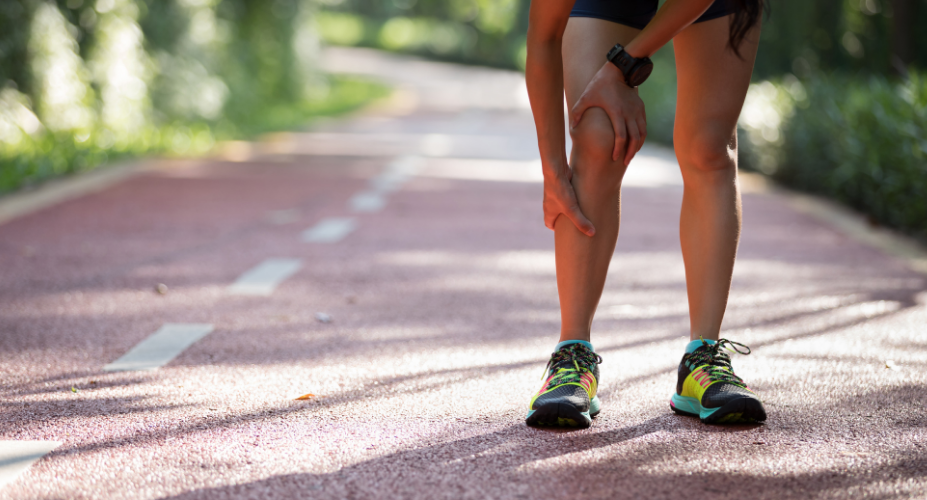
No matter where you land on the fitness spectrum, there is always risk of a knee injury that will derail your progress. Unfortunately, knee injuries can plague just about anyone — from beginners to seasoned gym-goers and elite runners.
Physically active people are at risk for knee injuries mainly resulting from overuse and improper running or lifting techniques, as well as direct trauma to the joint.
Overuse injuries are often seen in runners who fail to cross-train or who have biomechanical problems. Improper lifting techniques can put uneven forces on your knees, making you susceptible to injuries. And direct trauma to the joint is most likely the result of a work-related incident, a vehicular collision or an accident while playing a sport that requires quick and sudden changes in direction, like basketball, football or hockey.
Although sporting accidents causing trauma to the knee joint can be unavoidable, overuse injuries are preventable. At the very least, there are exercises you can do that will mitigate your risk. The longer you can remain injury-free, the better results you will achieve.
Strengthening your glutes, hamstrings and quadriceps will help prevent knee injuries. The gluteus medius plays a very important role in stabilizing your hips and preventing unnecessary internal rotation of the knee, especially during weight-bearing activities. And if your hamstrings are too weak relative to your quads, you are also more likely to get injured because this causes imbalanced forces to act upon your knee.
The good news: There are five simple moves that will help strengthen the muscles surrounding your knee and hip joints, allowing you to train harder, run better and lift more efficiently.
1. Clamshell

The clamshell helps strengthen your gluteus medius.
To perform the clamshell, lie down on your side. Then bend both your legs at the knees. While keeping your legs bent and your feet together, activate your gluteus medius as you lift up your top leg. It’s important to do the same number of repetitions on each side. In order to make the move more challenging, add an elastic band around your knees.
2. Side Leg Lift

This move is performed almost like the clamshell, except your top leg is straight while your bottom leg is slightly bent. Lie down on your side and make sure that both your hips and both shoulders are directly underneath each other. While engaging your gluteus medius, lift your top leg up toward the sky. Lift it high enough to be able to engage your glutes while maintaining proper form. However, there is no need to lift it super high.
If you would like to challenge yourself, hold your top leg for three to five seconds in the “up” position before bringing it down to start your next repetition. Again, you should do the same number of repetitions on each side.
3. Glute Bridge

The glute bridge works your glutes, hamstrings and core.
Lie on your back with your knees bent and feet shoulder-width apart. Place your feet firmly on the floor. Engage your glutes and core as you lift your hips up off the floor. Hold the “up” position for a few seconds before bringing your hips back down to start another repetition. If you would like to further challenge yourself, place a barbell on top of your hips to add resistance.
4. Resistance-Band Squat

Resistance-band squats primarily target your glutes, as well as your quads.
Place a band around both your legs, just above your knees. You should feel resistance from the elastic band as you stand with your feet shoulder-width apart. Descend into a squat position while pushing your legs outward to keep your knees from going inward as you squat. As you come down, make sure that your knees don’t go too far forward over your toes.
5. Ball Hamstring Curl

Ball hamstring curls target your hamstrings, core and glutes.
Lie on your back with your heels on an exercise ball. Using your arms at your sides for balance, engage your core and glutes as you lift your hips off the floor. While your hips are in the air, contract your hamstrings as you pull the ball toward you with your feet. In order to make this exercise more challenging, try doing single-legged ball hamstring curls. If you are doing single-legged repetitions, be sure to do the same number for each leg.
The number of repetitions you perform for each of the above exercises will depend on your fitness level. Beginners should attempt to do three sets of 10 repetitions. As you get more advanced, you will be able to do more repetitions as well as gradually increase the difficulty of each exercise.
When you strengthen your posterior chain, you will decrease your risk for injury, which will make you a better lifter and runner. The longer you remain injury-free, the better your results will be.
Written by Yana Hempler for Oxygen Magazine and legally licensed through the Matcha publisher network. Please direct all licensing questions to legal@getmatcha.com.


